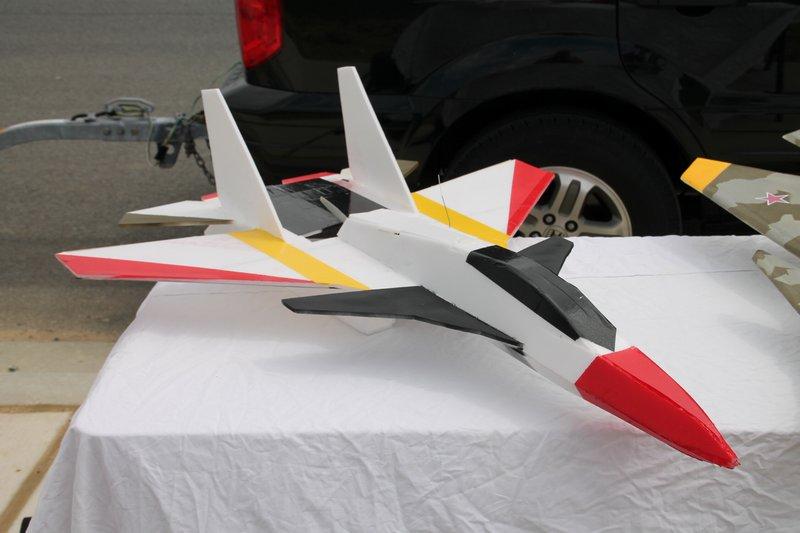Exploring the Pros and Cons of Foam RC Jets: Tips for Building and Flying
Foam RC jets have become increasingly popular among RC enthusiasts in recent years. These remote-controlled aircraft are powered by electric ducted fan motors and are constructed with foam materials, making them lightweight and easy to maneuver. In this article, we will discuss the benefits and drawbacks of using foam for RC jets. We will also provide tips on building and flying foam RC jets. One of the biggest advantages of using foam for RC jets is their lightweight construction. Foam is easier to form and shape, allowing for greater flexibility in design. Additionally, foam is affordable and easily accessible, making it an attractive material for beginners. Foam also has excellent shock absorption, which can be beneficial in the event of crashes or hard landings. Despite their benefits, foam RC jets also have several drawbacks. Durability can be an issue with foam, as it may not hold up as well as other materials in the event of crashes. Foam can also be affected by weather conditions, meaning it may not perform as well on windy days. Additionally, foam does not provide many customization options compared to other materials like fiberglass or carbon fiber. When building and flying foam RC jets, it is important to use high-quality foam materials and add reinforcement in high-stress areas to ensure durability. It is also important to check weather conditions before flying, as foam jets may not perform as well on windy days. Additionally, beginners should practice on a simulator before flying their RC jet to avoid crashes and accidents.
Essential Tips for Foam RC Jet Building and Flying
When building and flying foam RC jets, it is essential to follow best practices to ensure safety and optimal performance. First and foremost, users should use high-quality foam materials, which can be found from various online stores or hobby shops. Adding reinforcement in high-stress areas like the nose, wing roots, and landing gear is also a critical step that can make the difference between a successful flight and a crash. Checking the weather conditions before flying is also important, as foam jets may not perform as well on windy days. Finally, beginners should practice on a simulator before flying their RC jet, as it can help them get the feel for how the jet maneuvers and avoid crashes and accidents.
What are some high-stress areas in a foam RC jet that require reinforcement?
Some high-stress areas in a foam RC jet that require reinforcement include the wings, fuselage, and landing gear.
Drawbacks of foam RC jets: limited durability and customization options
Despite their benefits, foam RC jets also have several drawbacks. Durability can be an issue with foam, as it may not hold up as well as other materials in the event of crashes. It’s important to note that some manufacturers offer reinforced foam materials that can provide additional durability. Additionally, foam can be affected by weather conditions, meaning it may not perform as well on windy days. Finally, foam does not provide many customization options compared to other materials like fiberglass or carbon fiber. However, some websites like HobbyKing offer a wide variety of foam RC jet models with different designs to choose from.
Material Durability Customization Options
Foam Low Limited
Fiberglass High Medium
Carbon fiber Very high High
How can foam RC jets be reinforced for better durability?
Foam RC jets can be reinforced by adding carbon fiber or fiberglass rods, using reinforced tape, or applying epoxy resin.
When Building and Flying Foam RC Jets
When building and flying foam RC jets, it is important to use high-quality foam materials to ensure durability. Some popular foam types for RC jets include EPP foam, EPS foam, and Depron foam. Adding reinforcement in high-stress areas like the wing roots or landing gear can also help improve durability. It’s also important to check weather conditions before flying, as foam jets may not perform as well on windy days. Finally, beginners should practice on a simulator before flying their RC jet to avoid crashes and accidents. Some RC simulators like RealFlight or Phoenix RC Simulator offer realistic flight simulation for various RC aircraft, including foam RC jets.
What are some recommended RC flight simulators for beginners to practice flying foam RC jets?
Some recommended RC flight simulators for beginners to practice flying foam RC jets are RealFlight 8, Phoenix 5, and AeroFly RC 8.
Flying foam RC jets can be a thrilling experience for hobbyists. However, it’s important to remember that safety should always be a top priority. Before flying, make sure to check local laws and regulations regarding RC aircraft. Additionally, it’s important to fly in open and unpopulated areas to avoid accidents. While flying, be aware of your surroundings and maintain a safe distance from people and property. In case of an emergency, like a sudden loss of control or battery failure, always be prepared to immediately land the RC jet to avoid any harm or property damage.
In conclusion, foam RC jets offer a fun and exciting option for RC enthusiasts. With their lightweight construction and affordability, foam RC jets have grown in popularity in recent years. While building and flying foam RC jets, it is important to use high-quality materials and follow best practices to ensure safety and optimal performance. Remember to always prioritize safety when flying, including checking regulations, flying in open areas, and maintaining awareness of your surroundings. By following these tips, hobbyists can enjoy the thrill of flying their foam RC jet with confidence and peace of mind.






